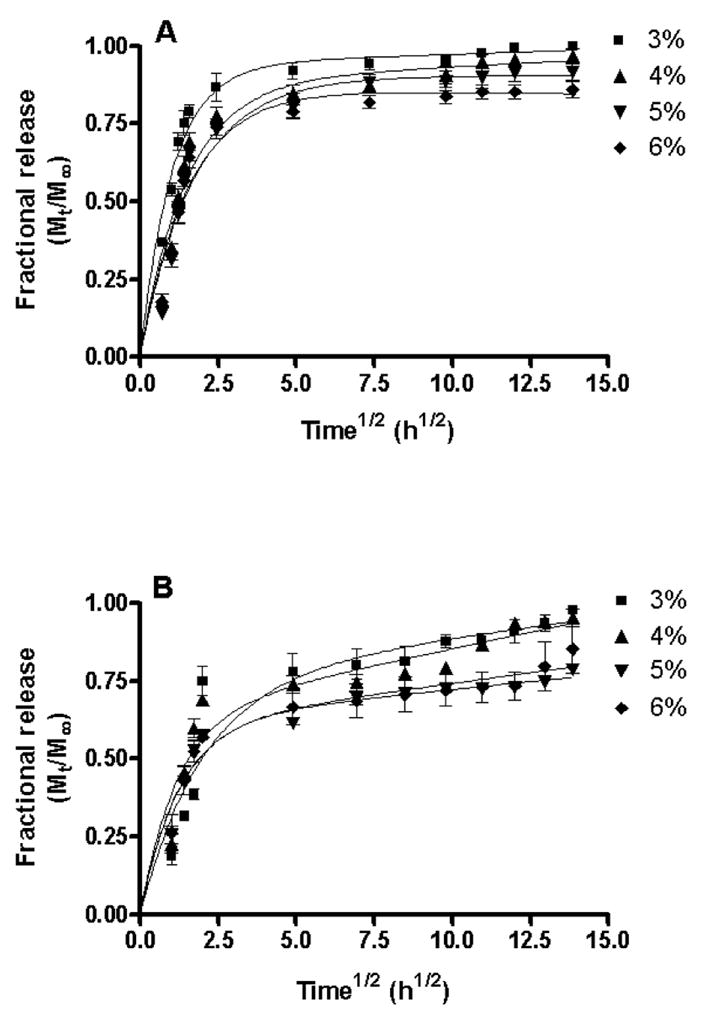Fig. 5.

Fractional release of pilocarpine as a function of time for 3, 4, 5 and 6% (w/v) hydrogels prepared using 1:1 (A) and 1:2 (B) stoichiometries. All measurements were performed in triplicate and plotted as mean±SEM. The release data were fitted using a two-phase exponential association equation in GraphPad Prism 4 software. The goodness of fit (R2) for the different hydrogels varied from 0.76 to 0.93. The initial burst release of pilocarpine appears to correlate well with the swelling phase (~0–3h) as shown in Figure 4. Once swelling terminates, a sustained release phase begins. The higher burst phase appears to also be affected by pore size with the largest pore size hydrogel (3%) having the largest burst effect. The release mechanism is non-fickian or anomalous involving both diffusion and polymer relaxation (0.5<n<1). An increase in copolymer/crosslinker concentration results in a slower pilocarpine release.
